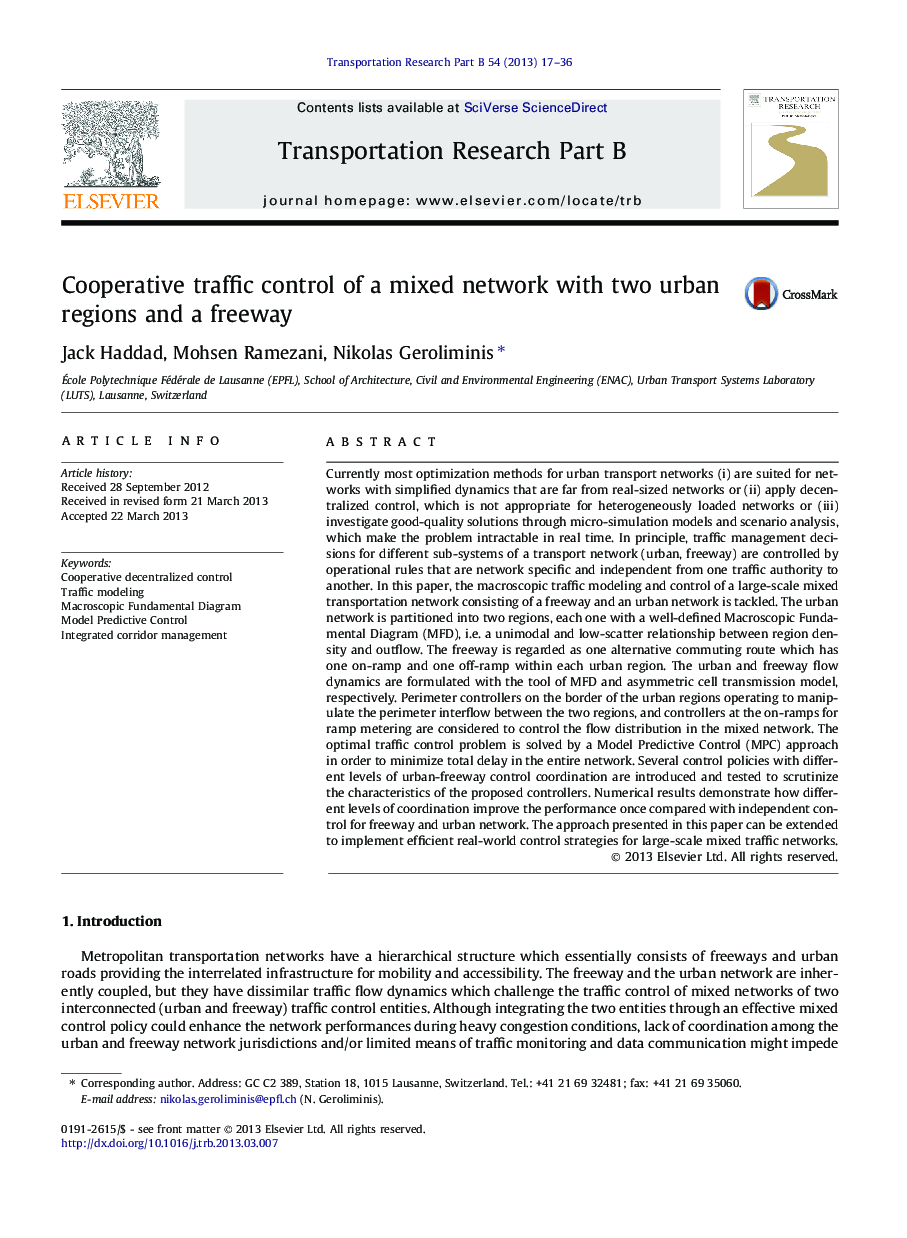| کد مقاله | کد نشریه | سال انتشار | مقاله انگلیسی | نسخه تمام متن |
|---|---|---|---|---|
| 1132118 | 1488989 | 2013 | 20 صفحه PDF | دانلود رایگان |

• Develop a macroscopic traffic modeling of mixed network of freeways and arterials.
• Perimeter control for the urban system is combined with ramp metering for the freeways.
• The optimal traffic control problem for the mixed network is solved by a Model Predictive Control.
• Performance comparison of coordinated vs. independent control for freeway and urban network.
• Integration of a simple route choice model in the MPC control framework.
Currently most optimization methods for urban transport networks (i) are suited for networks with simplified dynamics that are far from real-sized networks or (ii) apply decentralized control, which is not appropriate for heterogeneously loaded networks or (iii) investigate good-quality solutions through micro-simulation models and scenario analysis, which make the problem intractable in real time. In principle, traffic management decisions for different sub-systems of a transport network (urban, freeway) are controlled by operational rules that are network specific and independent from one traffic authority to another. In this paper, the macroscopic traffic modeling and control of a large-scale mixed transportation network consisting of a freeway and an urban network is tackled. The urban network is partitioned into two regions, each one with a well-defined Macroscopic Fundamental Diagram (MFD), i.e. a unimodal and low-scatter relationship between region density and outflow. The freeway is regarded as one alternative commuting route which has one on-ramp and one off-ramp within each urban region. The urban and freeway flow dynamics are formulated with the tool of MFD and asymmetric cell transmission model, respectively. Perimeter controllers on the border of the urban regions operating to manipulate the perimeter interflow between the two regions, and controllers at the on-ramps for ramp metering are considered to control the flow distribution in the mixed network. The optimal traffic control problem is solved by a Model Predictive Control (MPC) approach in order to minimize total delay in the entire network. Several control policies with different levels of urban-freeway control coordination are introduced and tested to scrutinize the characteristics of the proposed controllers. Numerical results demonstrate how different levels of coordination improve the performance once compared with independent control for freeway and urban network. The approach presented in this paper can be extended to implement efficient real-world control strategies for large-scale mixed traffic networks.
Journal: Transportation Research Part B: Methodological - Volume 54, August 2013, Pages 17–36